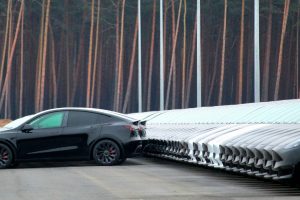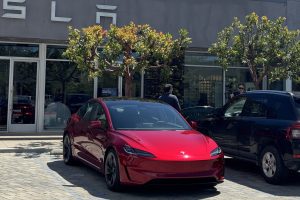Key Points
- ⚡️ Many landlords and real estate owners in Los Angeles are rapidly installing new EV chargers at apartments, stores, and office buildings.
- 🏢 EV charging stations are becoming a necessity for new housing developments in Los Angeles and present an opportunity for businesses to generate income from EV owners.
- 🚗 The expansion of charging networks in Los Angeles may still be insufficient to meet the growing demand for EVs, especially as California has banned the sale of new gas cars starting in 2035.
- 🔌 Some property owners are retrofitting power outlets in garages to offer Level 2 charging, recognizing that having charging stations is no longer an amenity but a necessity for attracting and retaining tenants.
- 🚘 Several automakers, including Jaguar, Ford, General Motors, Mercedes-Benz, Rivian, Hyundai, and Honda, have adopted Tesla’s North American Charging Standard (NACS) for their future EV releases.
As the auto industry transitions to electric vehicles (EVs), many have aired concerns that there will not be enough charging stations. According to one new report, many landlords and real estate owners in Los Angeles, California are rushing to construct new EV charging hardware at apartments, stores, office buildings and more.
Charging stations are not only considered a necessity for new housing developments in Los Angeles, according to the LA Times, but they’re also an opportunity for owners of convenience stores, fast food restaurants, gas stations, movie theaters and other retailers to make money while EV owners charge. Tesla and other companies are rapidly deploying new charging stations across the country, and the company recently built its 50,000th Supercharger stall.
Still, it’s difficult to say if the efforts to expand charging networks are enough, as many in the Los Angeles metro have pointed out.
One planning commissioner demanded project manager Hamid Behdad, who was overseeing a $350 million condominium skyscraper project in Los Angeles, to quadruple the number of charging stations at the project. Behdad eventually agreed to the last-minute change, now saying he’s “extremely glad that commissioner forced us” to build chargers at about 20 percent of the structure’s parking spots.
“When you are in the heat of the hearing in the last leg of the proposal, you aren’t going to say no,” Behdad said. “If we didn’t have these 90 chargers, we would be in real trouble selling units.”
As the demand for Tesla and other EVs continues to grow, many remain concerned about the state of the public charging infrastructure that will need to keep vehicles charged. The pace of EV adoption has accelerated rapidly in California, and it’s expected to follow suit throughout the U.S. in the coming years.
If demand wasn’t increasing enough on its own, California has also enacted a ban on the sale of new gas cars starting in 2035, and the move has since been followed by a number of states and even other countries.
One environmentally conscious housing developer, Cityview, is attempting to add as many charging stalls as allowed by a building’s electrical system. However, Cityview CEO Sean Burton notes that some older properties offer limited levels of available power supply for charging hardware, making it difficult.
“In general I think building owners are adopting more slowly than they should,” Burton said. “We try to be more leading edge on sustainability issues.”
ZRS Management, a property manager overseeing 76,000 apartment units is looking to retrofit power outlets in its garages to allow 210-volt, Level 2 charging, according to Vice President of Operations Jackie Impellitier. These systems can take roughly three to eight hours to charge an EV, and tenants have charging fees added to their utility bills.
“The thing we are all acknowledging is having charging stations is no longer an amenity, it’s a necessity,” Impellitier said of keeping tenants and garnering new ones. “We are going to start losing renters if we don’t have easy and convenient access” to chargers.
Several automakers, most recently including Jaguar, have signed on board to adopt Tesla’s North American Charging Standard (NACS), including plans to add the company’s charging port to their future EV releases. Ford was the first major automaker to adopt the equipment, as announced earlier this year in a Twitter Spaces call with Elon Musk. The company has since been joined by General Motors, Mercedes-Benz, Rivian, Hyundai, Honda and more.





